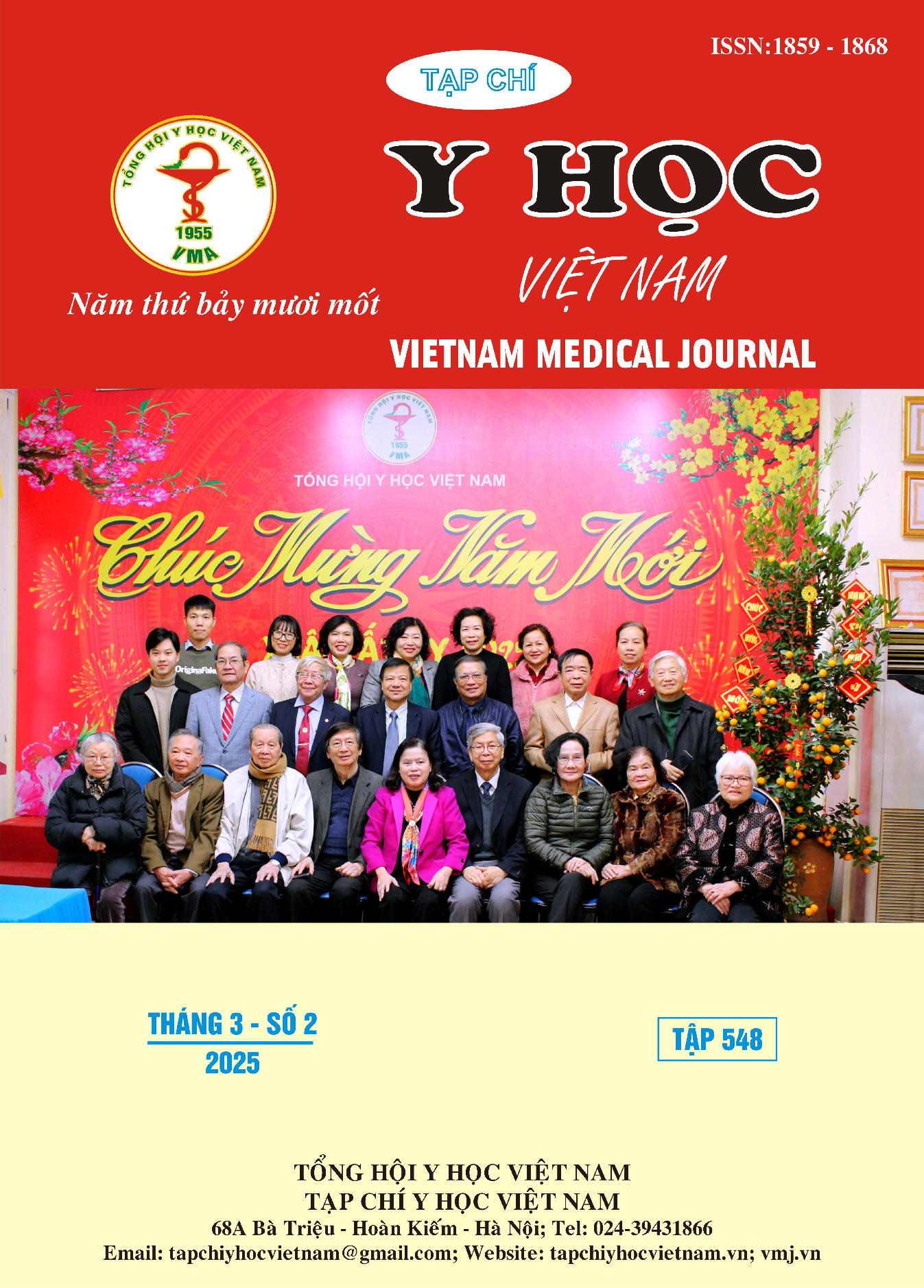THE MINIMUM INHIBITIVE CONCENTRATION OF ANTIBIOTICSAND ANTIBIOTIC RESISTANCE OF COMMON BACTERIA IN HOSPITAL PNEUMONIA AND MECHANICAL VENTILATOR PNEUMONIA AT THE RESPIRATORY DEPARTMENT OF CHO RAY HOSPITAL
Main Article Content
Abstract
Background: Updating antibiotic resistance status and determining the minimum inhibitory concentration (MIC) in hospital-acquired pneumonia (HAP) and ventilator-associated pneumonia (VAP) are essential to improving treatment effectiveness. Objective: To investigate the minimum inhibitory concentration (MIC) and antibiotic resistance status of bacteria causing HAP and VAP. Materials & Method: A cross-sectional descriptive study on patients diagnosed with HAP and VAP treated at the Respiratory Department, Cho Ray Hospital. Results: 82 agents were isolated from 64 patients out of 258 included cases with 53.7% HAP, 46.3% VAP and Gram-negative was the predominant agent with the ratio of A. baumannii, K. pneumoniae , P. aeruginosa, E. coli are 57.3%, 28%, 7.3% and 4.9% respectively. The antibiotics recommended by ATS/IDSA for empirical treatment of Gr(-) bacteria all have MICs that exceed the resistance threshold with high frequency. MIC Meropenem ≥ 16 for A. baumannii and P. aeruginosa is 100%, for K. pneumoniae is 78.3%. MIC Imipenem ≥ 16 for A. baumannii, P. aeruginosa and K. pneumoniae was similar to Meropenem at 100%, 100% and 69.6%. In contrast, with MRSA, empirical antibiotics all have MICs below the resistance threshold. Conclusion: Bacteria causing HAP - VAP all have MICs exceeding the resistance threshold with high frequency for antibiotics commonly used in clinical practice, and/or recommended for treatment. Multiresistant gram-negative bacteria are mostly resistant to group 2 Carbapenem antibiotics. S. aureus remains susceptible and has low MICs to currently available and recommended antibiotics. The more drug-resistant bacteria a patient has, the higher the MIC, the worse the clinical outcome, especially the higher the mortality rate.
Article Details
Keywords
VAP, HAP, MIC, antibiotic resistance.
References
2. American control disease center (2020), "Ventilator - associated pneumoniae (VAP) and non-ventilator-associated pneumoniae (N-VAP) event", pp. 17.
3. Trần Văn Ngọc Trần Minh Giang (2019), "Kiểu hình đề kháng kháng sinh của vi khuẩn gây viêm phổi thở máy tại bệnh viện Nhân dân Gia Định", Nhà xuất bản y học Thành phố Hồ Chí Minh.
4. Trương Thiên Phú Trần Thị Thanh Nga, Nguyễn Văn Khôi và cộng sự (2017), "Đặc điểm vi khuẩn và đề kháng kháng sinh trong viêm phổi bệnh viện - viêm phổi thở máy tại bệnh viện Chợ Rẫy 2015-2016", Hội nghị đề kháng kháng sinh trong viêm phổi cộng đồng và bệnh viện lần thứ 4, tháng 12/2017, tr. 2.
5. Phạm Thị Ngọc Thảo, Trần Văn Ngọc, Trần Thanh Nga (2017), "Khảo sát đặc điểm kháng thuốc của Pseudomonas aeruginosa và Acinetobacter baumannii gây viêm phổi bệnh viện", Thời sự Y học, tr. 5.
6. Trần Văn Ngọc, Trần Thị Thanh Nga, Trần Thị Thúy Tường (2014), "Mối liên quan giữa MIC Vancomycin và hiệu quả điều trị Staphylococcus aureus đề kháng Methicillin", Tạp chí Y học TP. Hồ Chí Minh, tr. 5.
7. Lê Tiến Dũng (2017), "Viêm phổi bệnh viện: đặc điểm vi khuẩn và đề kháng kháng sinh in vitro tại bệnh viện đại học Y Dược TP. HCM", Thời sự Y học. 10/2017, tr. 6.
8. Lê Bật Tân (2018), "Nghiên cứu đặc điểm lâm sàng, X-quang phổi và vi khuẩn gây bệnh của viêm phổi bệnh viện ở người lớn điều trị tại bệnh viện Phổi Trung Ương", Luận án Tiến sĩ Y học, tr. 122.


